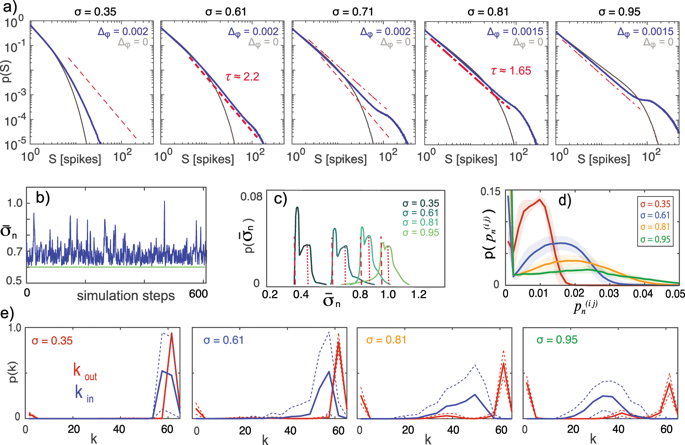Communications Physics ( IF 5.5 ) Pub Date : 2020-01-17 , DOI: 10.1038/s42005-019-0276-8 Karlis Kanders , Hyungsub Lee , Nari Hong , Yoonkey Nam , Ruedi Stoop

|
Patterns of biological activity with properties similar to critical states of statistical mechanics have received much attention, as they were mostly seen as indicators of computational optimality. Commonly, a single regime around an isolated critical point is expected. Our experimental data and our network simulations of developing neural cultures indicate the possibility of transitions between different critical regimes. In the latter, the addition of further fundamental neurophysiological principles to the standard neurodynamics branching model generates steeper power laws that have been observed in various experiments. Our analysis exhibits two populations of neurons, each composed of inhibitory and excitatory sites, that have distinct dynamical and topological properties. This generates a line of second order critical points, similar to what is known from the thermodynamics of two-component alloys. An analysis of two major critical regimes found in the experiments suggests that different critical regimes may express distinct computational roles.
中文翻译:

发展中的神经网络中二阶临界线的指纹
具有与统计力学的临界状态相似的特性的生物活动模式已受到广泛关注,因为它们通常被视为计算最优性的指标。通常,期望在孤立的临界点附近有一个单一的制度。我们的实验数据和我们对发展中的神经文化的网络模拟表明,在不同的关键状态之间可能会发生转变。在后者中,将其他基本的神经生理原理添加到标准神经动力学分支模型中会产生更陡峭的幂律,这已在各种实验中观察到。我们的分析显示了两个神经元群体,每个神经元都由抑制位点和兴奋位点组成,它们具有独特的动力学和拓扑特性。这会产生一系列二阶临界点,类似于从二组分合金的热力学得知的情况。对实验中发现的两种主要临界状态的分析表明,不同的临界状态可能表示不同的计算角色。


























 京公网安备 11010802027423号
京公网安备 11010802027423号